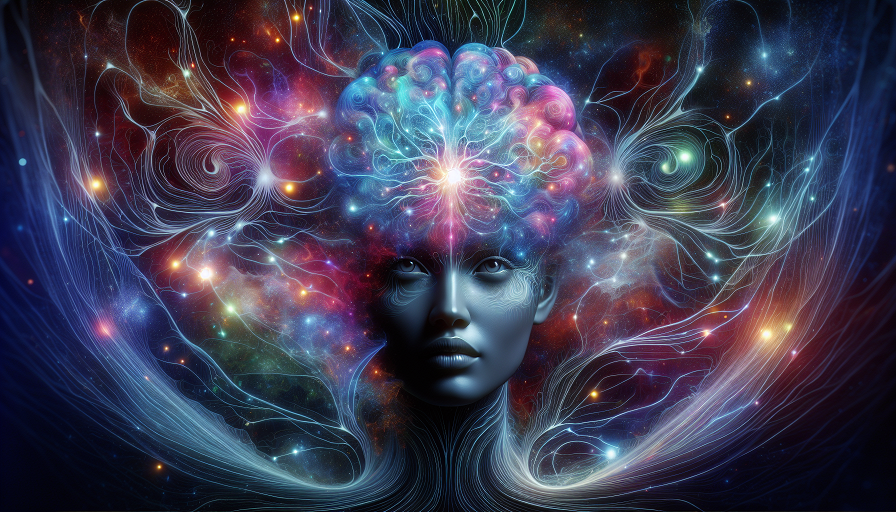You don’t have a clock inside your head. Yet somehow, you know when it’s time to eat, how long that meeting dragged on, or whether an event happened last week or last year. This internal sense of time—called chronoception—is one of the brain’s most underrated abilities. And unlike sight or sound, you can’t close your eyes to it. You are always in time, and your brain is always keeping track.
But how exactly does your brain measure something so abstract and invisible? And how does this hidden timing system influence your memory, behavior, and sense of self? Here we look at how the brain maps time—and why it matters more than we realize.
What Is Chronoception?
Chronoception is your sense of time—not just the ticking of a second hand, but the mental tracking of durations, sequences, intervals, and temporal orientation (past, present, and future). It’s how you know how long you’ve been sitting still, how far away a deadline is, or whether you’ve been scrolling for five minutes or fifty.
Chronoception Involves:
- Interval timing: Judging short spans (milliseconds to minutes)
- Circadian timing: Managing biological rhythms (24-hour cycles)
- Temporal memory: Recalling when events occurred
- Prospection: Imagining and planning for the future
This sense operates beneath your awareness most of the time—but it profoundly shapes your day-to-day life.
The Brain’s Timekeeping Network
Unlike vision or hearing, there’s no single organ for time. Instead, your brain uses a network of regions to keep track of time through oscillations, comparisons, and memory anchors.
Key Brain Areas Involved in Chronoception:
- Suprachiasmatic nucleus (SCN): The brain’s master clock, controlling circadian rhythms
- Cerebellum: Coordinates timing for motor and cognitive tasks
- Basal ganglia: Essential for interval timing and habit formation
- Prefrontal cortex: Tracks time for decision-making and planning
- Hippocampus: Encodes time-stamped memories
Together, these regions allow you to estimate duration, organize memories, and anticipate events.
How the Brain Builds a Timeline
To make sense of time, the brain creates a mental timeline—a narrative arc stretching from your remembered past through the experienced present and into the imagined future. This isn’t linear like a calendar; it’s dynamic, contextual, and often subjective.
How the Brain Anchors Time:
- Links events to emotional intensity (strong emotions make time “stand still”)
- Uses changes in context or scenery as temporal markers
- Groups similar experiences into mental clusters (“the summer I moved”)
This internal mapping explains why some years feel like a blur while others remain vivid and well-organized in memory.
Time Perception and Emotional State
Your perception of time is heavily influenced by your emotional and cognitive state. When you’re bored, time drags. When you’re in flow, hours can disappear.
Factors That Skew Time Perception:
- Anxiety: Makes time feel slower (heightened threat monitoring)
- Depression: Can flatten the sense of time and disconnect future thinking
- Mindfulness: Enhances present-moment awareness, distorting duration
- Stress: Narrows focus and alters time estimation accuracy
Because time perception is so malleable, it can be trained and recalibrated—like any other sense.
Chronoception and the Self
Your identity is built not only on who you are but when you are. The brain uses time to stitch together the continuous narrative of self. This timeline helps you reflect on the past, set goals for the future, and feel grounded in the now.
Temporal Cognition Shapes:
- Autobiographical memory: Your life story is time-anchored
- Executive function: Planning and goal setting require future modeling
- Moral reasoning: Includes considering long-term consequences
Damage to temporal cognition—as in certain neurological disorders—can disrupt a person’s sense of identity, making them feel unmoored or stuck in an eternal “now.”
Time in Memory and Imagination
Interestingly, the same neural systems are used when remembering the past and imagining the future. Both rely on the hippocampus and related networks to simulate scenes and stitch them into a mental timeline.
What This Means:
- When you reflect, you “time travel” through memory
- When you plan, you simulate future events with past knowledge
- The accuracy of your timeline affects your ability to make smart decisions
Chronoception isn’t just about clocks—it’s about your narrative agency.
When Time Goes Awry: Disordered Chronoception
Certain neurological and psychological conditions can disturb time perception:
- ADHD: Often includes impaired time estimation and future planning
- Parkinson’s disease: Affects basal ganglia, disrupting interval timing
- PTSD: Traps memory in an “eternal present,” interfering with timeline continuity
- Schizophrenia: May include temporal disintegration or hallucinated time distortion
Studying these disruptions helps us understand how essential chronoception is for functional thought.
Can Nootropics Improve Time Perception and Temporal Planning?
While nootropics don’t give you a built-in stopwatch, some compounds may enhance the neural mechanisms that support time-based cognition—especially focus, memory integration, and future modeling.
Nootropics That May Help:
- Citicoline: Supports attention and cognitive organization
- Lion’s Mane Mushroom: Enhances neuroplasticity for timeline building and flexible memory
- Rhodiola Rosea: Aids in managing time-pressure stress and task endurance
- Bacopa Monnieri: Improves memory retrieval and sequencing
When combined with mindfulness or task management strategies, these may help reinforce a healthier, more productive sense of time.
Time isn’t just something you track—it’s something your brain builds. Your ability to map, measure, and move through time underpins everything from daily habits to your deepest sense of self. So the next time you feel disoriented or behind, don’t just check your calendar. Ask your brain: “Where am I in my story?”
Because your mind doesn’t just live in the moment—it navigates time. And that’s one of its greatest cognitive achievements.

